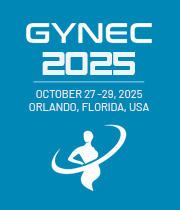Title : Maternal trends and outcomes in instrument assisted vaginal deliveries: A retrospective study
Abstract:
Background: Instrument-assisted vaginal deliveries (IAVDs), including the use of vacuum and forceps, are key procedures in obstetrics that help avoid cesarean sections, especially in cases of delayed second-stage labor or fetal distress. Although widely practiced, there is limited published data from the UAE focusing on maternal stress indications and outcomes related to IAVDs. This study aims to explore the reasons for these interventions and assess maternal outcomes in such cases.
Methods: This retrospective study was carried out at Thumbay University Hospital in Ajman, reviewing medical records of women who had IAVDs between January 2022 and January 2025. Data were gathered using a structured and validated form that covered patient details, instrument type, reasons for intervention, and both maternal and newborn outcomes. Records of cesarean births and incomplete files were excluded. Statistical analysis was done using SPSS version 28, with descriptive statistics and Chi-square tests applied (p < 0.05 considered significant).
Results: Out of 116 cases reviewed, the majority were first-time mothers (64.7%) aged between 21 and 34 (80.2%), all at full-term. The leading reasons for IAVD were inadequate pushing efforts (60.3%), prolonged second stage (39.7%), and fetal distress (37.9%). Vacuum delivery was the preferred method. The most frequent maternal outcome was episiotomy (82.8%), with fewer cases of extended episiotomy (16.4%) and vaginal tears (8.6%). Serious complications were uncommon. No meaningful links were found between maternal demographics and the indications for IAVD (p > 0.05).
Conclusion: Most IAVDs at the hospital were performed on full-term, first-time mothers. The common triggers were poor maternal effort, delayed labor, and fetal concerns, with vacuum use being most common. Overall, outcomes were favorable, with only minor complications and few serious issues. Maternal characteristics didn’t appear to predict the need for intervention, emphasizing the value of sound clinical judgment and proper technique in guiding safe deliveries.



